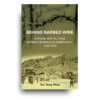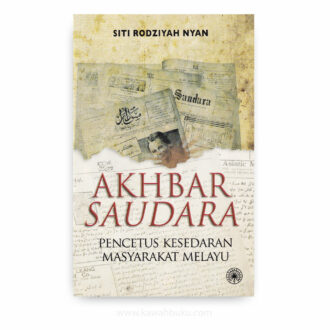Behind Barbed Wire: Chinese New Villages During the Malayan Emergency, 1948-1960 revisits the moment in the Malayan Emergency when some 500,000 women, children, and men were uprooted from their homes and moved into new settlements, guarded day and night by police and troops. A majority were rural Chinese: market gardeners, shopkeepers, rice farmers, tin miners, and rubber tappers who had long made Malaya their home and had lived through the hardships of the Japanese Occupation.
Based upon newly accessible archival materials and painstaking multilingual interviews with more than 80 informants in four New Villages, Tan Teng Phee rewrites the history of the Emergency, exposing the voices of those at the heart of this lauded ‘social experiment’. In Francis Loh’s words, these were ordinary villagers caught in the crossfire between the British security forces and the Malayan Communist Party whose lives were turned inside-out and re-ordered completely, with daily curfews, body searches and food controls alongside the carrots and sticks of registration, (re)education, sanitation, psychological warfare, and swift punishment.
Highlighting the disciplinary aims of British policy, as well as the ways in which villagers resisted this discipline through ‘weapons of the weak’, Behind Barbed Wire forms a unique history from below of the Malayan Emergency, and of a resettlement program which shaped the social and geographical landscape of Malaysia for generations to come.
Behind Barbed Wire: Chinese New Villages During the Malayan Emergency, 1948-1960 is not the first on the origins of Malaysia’s New Villages. Several others have discussed the wide scope of the resettlement process, how it was conducted, how resettlement impacted on the lives and livelihoods of ordinary villagers, and subsequently on post-independence politics as well. That said, there are three aspects that make this book special and exciting.
First, the author has had access to new archival material which others, with the exception of Anthony Short, the official historian of the Emergency, did not have access to previously. These materials include the post-War Selangor Secretariat and British Advisor files, and the Tan Cheng Lock Papers.
Second, the author retelling of the history of the Emergency has been influenced by new theoretical insights pioneered by Michel Foucault on the one hand and by James Scott on the other. By using Foucault’s notion of ‘governmentality’ for instance, Tan relates the potentially boring recounting of the many Emergency regulations—living behind barbed wire and under curfew, centralized cooking arrangements, etc.—to an exciting discussion of how the British, via resettlement and threats, instilled ‘discipline’ in the Foucauldian sense, among the villagers, and asserted their authority over half-a-million-odd rural Chinese, previously out of the reach of the British colonial authorities.
This third aspect of this book makes it especially unique. Capturing the voices of the elderly, let alone those who lived in the New Villages during the trauma of the Emergency, is a most difficult endeavor. It requires awareness of the harsh realities of everyday life during the security-conscious 19508, mastery of several Chinese dialects/languages in order to capture nuances in language, patience, and sensitivity toward the elderly as they slowly recall and share their emotion-filled experiences with outside researchers like the author.
In all probability, Behind Barbed Wire: Chinese New Villages During the Malayan Emergency, 1948-1960 will be one of the last such social histories of the New Villages, for those villagers who shared their stories with the author were already well into their seventies, and even their eighties, when the author interviewed them.










